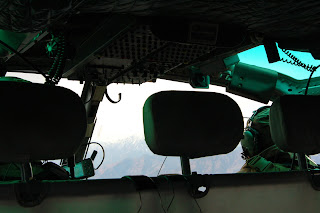Happy New Year! Rather, sale naw tabrik! We’re observing Nowruz, or the vernal equinox, the new year of the solar Persian calendar. It’s now 1390. So, for those of you in the States, I’m both in the future and the past. Crazy go nuts. Kabul will be celebrating with the Jashn-e Dehqan, or parade of farmers, and Buzkashi tournaments (one of the few things past the wire I’m not dismayed that I’m missing, even for the cultural experience. I skipped bull fights in Spain, and those seem tame in comparison). Traditionally speaking, there are festivals around the country this week, all with common themes of winter finally receding, renewal, agriculture, flowers…all that good springy stuff.
Our office will therefore be very quiet this week, as most of my co-workers are taking both Monday and Tuesday off in observance of the holiday. This means they’ll only have a three-day work week, President Karzai having announced in December that the official Afghan weekend is Thursday and Friday. In fact, if I see anyone before Saturday, I’ll be a bit shocked.
The local linguists frequently poke fun at the national penchant for declaring holidays. One explained to me that Afghans take off Fridays as a day of rest and observance; then Thursdays, because it is close to Fridays; Saturdays, because after two days off, they’re too tired to work; and Sundays, because all the foreign guys seem to get those off, so no work will be done until Monday, anyway. Add to that the official holidays declared for inaugurations, jirgas, and memorials of every time someone captured or was kicked out of Kabul, and he estimated a fourth of the year to be made of holidays.
Maybe it is because of the influx of holidays, or perhaps it’s the Nowruz-induced spring fever, but we are having something of a baby boom around the office. One man’s wife just delivered, two others are expecting, and a fourth is trying for his first child. Another linguist is furiously attempting to push his Visa package through and get his wife to the states before she delivers here. Anchor babies away!
Unfortunately, pregnancy and child birth in Afghanistan is not a joking matter. The fertility rate here is estimated at over five children born per woman, one of the highest in the world. That pregnancies occur so frequently is an indication of both infant and maternal mortality; the result of the one and cause of the other. Indeed, Doc did not disclose that his wife was pregnant until he had to scamper out of the office after her water broke. Per the World Bank, almost 134 in every 1000 live births will result in death before the child reaches a year.
Children are not the only ones in danger. The maternal mortality rate, though not quite as high, remains 1400 per every 100,000 live births. Happily, this statistic has dropped from 1800 a decade ago, yet it is still higher than every other country ranked by Human Development Index, including Somalia. Afghanistan further enjoys the dubious honour of being one of the few states in which adult female mortality is higher than that of men, in part due to dramatic failures in reproductive health care and an extremely high adolescent fertility rate.
Himself an OB/GYN, the Doctor had a unique insight into the role of the health care system as a substantive contributing factor to female morbidity and mortality. He was unable to take wife to a well-equipped private due to the prohibitive costs. Instead, they went to a public hospital, where she began hemorrhaging. The nurse charged him a progressive fee for every bag of blood she hung. Apparently, she was kind enough to offer the blood at a discount, seeing as how Doc trained at the very same hospital himself. Otherwise he could not have afforded it and his wife might have bled out.
Doc was not unique in his reticence to discuss his wife’s pregnancy. Indeed, it was only because we razzed him for not telling us that the three other guys in the office even fessed up to expecting children. One already has six and another four. Matullah, he of four daughters, plans to continue having children until he replaces the son he lost in infancy years ago. He truly seems to love his daughters, but can never manage to hide his disappointment at being denied a boy. I might have teased him about ending up with a softball squad rather than a baseball team, were I not quite so perturbed. When is his wife going to bleed out, I wonder, and will he have the money to buy all of the blood she will need to survive? To his credit, another of my co-workers is kindly waiting for his teenage wife to finish high school before they try for kids.
Incidentally, the States is 44th on the HDI’s list, with a maternal mortality rate of 24 deaths per every 100,000 births. This is significantly lower than Afghanistan, to be sure, but it is also behind every other developed country, including Bosnia. Conventional wisdom, while always a dubious font of knowledge, suggests that this startling mortality rate results from the lack of universal health care. But, by all means, let’s get rid of the job-killing health care act. The supposed demise of jobs matters infinitely more than those of expectant mothers. They were probably all on welfare, anyway (the link is to a fairly lefty site. It was not the only place I found it these statistics, but I liked this article the best).




















